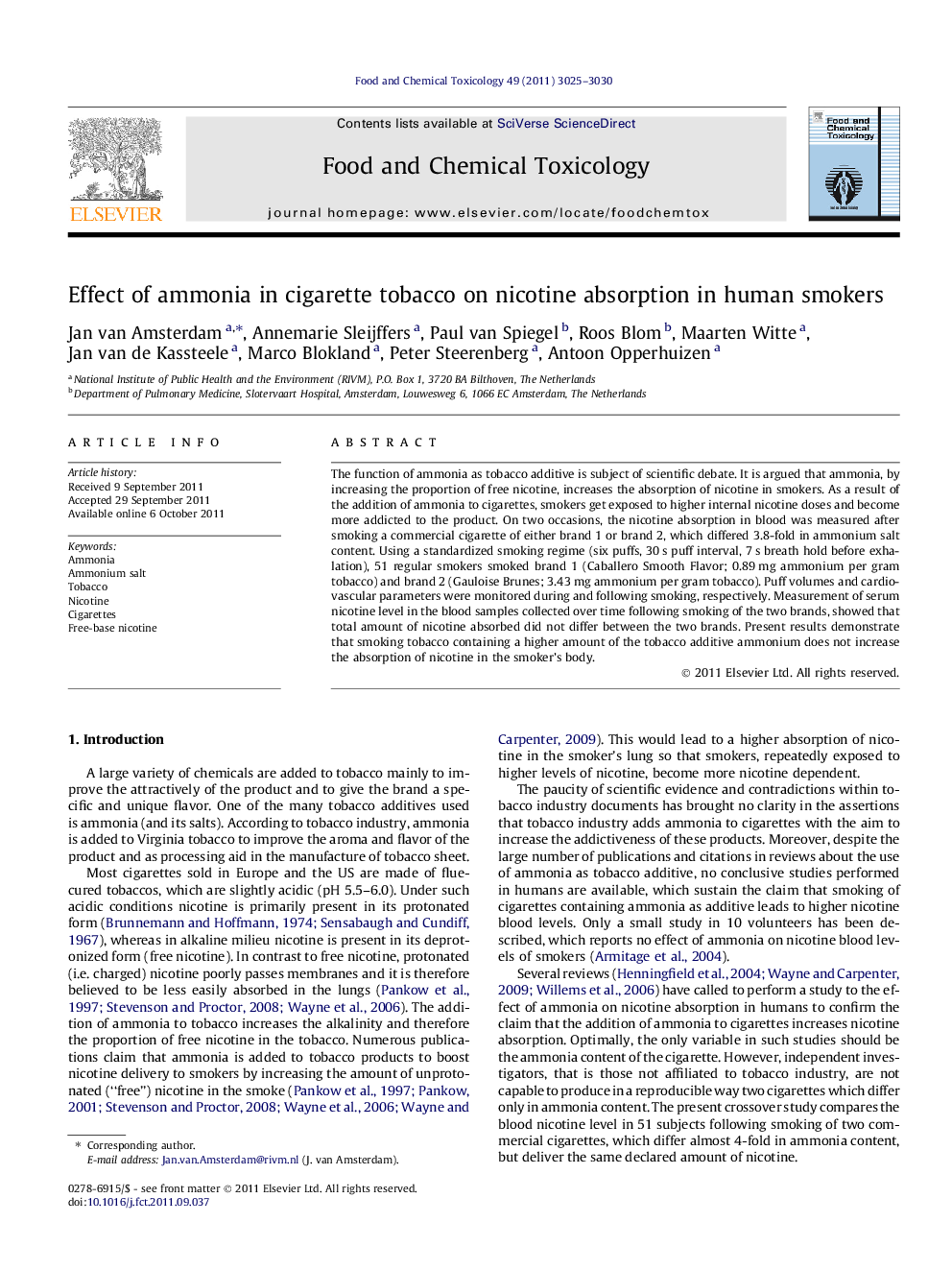| Article ID | Journal | Published Year | Pages | File Type |
|---|---|---|---|---|
| 5853200 | Food and Chemical Toxicology | 2011 | 6 Pages |
The function of ammonia as tobacco additive is subject of scientific debate. It is argued that ammonia, by increasing the proportion of free nicotine, increases the absorption of nicotine in smokers. As a result of the addition of ammonia to cigarettes, smokers get exposed to higher internal nicotine doses and become more addicted to the product. On two occasions, the nicotine absorption in blood was measured after smoking a commercial cigarette of either brand 1 or brand 2, which differed 3.8-fold in ammonium salt content. Using a standardized smoking regime (six puffs, 30Â s puff interval, 7Â s breath hold before exhalation), 51 regular smokers smoked brand 1 (Caballero Smooth Flavor; 0.89Â mg ammonium per gram tobacco) and brand 2 (Gauloise Brunes; 3.43Â mg ammonium per gram tobacco). Puff volumes and cardiovascular parameters were monitored during and following smoking, respectively. Measurement of serum nicotine level in the blood samples collected over time following smoking of the two brands, showed that total amount of nicotine absorbed did not differ between the two brands. Present results demonstrate that smoking tobacco containing a higher amount of the tobacco additive ammonium does not increase the absorption of nicotine in the smoker's body.
⺠It has been proposed that the addition of ammonia to tobacco increases the nicotine blood level in smokers. ⺠In this study two cigarettes, differing in ammonium content, were smoked by volunteers and nicotine blood levels measured. ⺠Our results show that the tobacco additive ammonium does not increase the absorption of nicotine in smokers.
